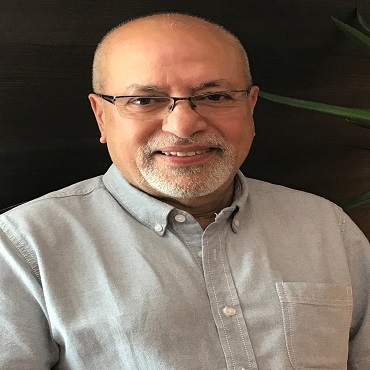Scientific Program

Mushtaq A Memon
Washington State University USA
Title: Integrative medicine - An upcoming trend in veterinary medicine
Biography:
Mushtaq Memon acquired his initial veterinary education in Pakistan before moving to the US, where he completed residency at the University of Illinois, Urbana-Champaign, and a PhD in Theriogenology at the University of Minnesota, St. Paul. He is a diplomat of the American College of Theriogenologists and has received his certification in acupuncture from the Chi Institute. Dr. Memon taught at several veterinary colleges for a total of 35 years, including Oklahoma State University, Louisiana State University, Tufts University, and Washington State University (WSU). He is very much a clinician-scientist, having authored or co-authored more than 170 publications, including two books: Food as Medicine and Brain Health. Dr. Memon is a recognized scholar, having served as a Fulbright Scholar in Oman, United Arab Emirates, and Pakistan, and is the first veterinarian to serve as a Fulbright Ambassador. He has also been an active presenter at scientific meetings, having presented at over 120 international and national functions. Dr. Memon recently retired from WSU and moved with his family to Atlanta, GA, where he now provides integrative reproduction consultations at Loving Touch Veterinary Clinic. Dr. Memon also currently serves as the Executive Director of the World association of Traditional Chinese Veterinary Medicine.
Abstract
With the increasing interest in integrative therapies in human, animal owners are seeking similar therapies for their pets. Integrative veterinary medicine, the combination of complementary and alternative therapies with conventional care, is increasingly prevalent in veterinary practice and a focus of clinical instruction in many academic teaching institutions. However, the presenting complaints, therapeutic modalities, and patient population in an integrative medicine service have not been described. A retrospective analysis of 5,195 integrative patient treatment sessions in a veterinary academic teaching hospital demonstrated that patients most commonly received a combination of therapeutic modalities (39% of all treatment sessions). The 274 patients receiving multiple modalities were most frequently treated for neurologic and orthopedic disease (50.7% versus 49.6% of all presenting complaints, resp.).Older neutered or spayed dogs (mean age=9.0 years) and Dachshunds were treated more often than expected based on general population statistics. Acupuncture, laser therapy, electro acupuncture, and hydrotherapy were frequently administered (>50%patients). Neurologic patients were more likely to receive acupuncture, electroacupuncture, and therapeutic exercises but less likely than orthopedic patients to receive laser, hydrotherapy, or therapeutic ultrasound treatments (𑃠< 0.05). The results suggest that the application of the specific modalities to orthopedic and neurologic diseases should be subjected to increased evidence-based investigations.
- Plant Vaccines
- Cancer Vaccines
- Therapeutic Vaccination and Immunizations
- Pregnancy & Neonatal Vaccines
- Vaccines Research & Development
- Hepatitis & HIV/AIDS Vaccines
- Vaccines & Immunizations
- Recombinant Vaccines
- Infectious diseases & Non-Infectious Diseases
- Clinical Immunology & Immunopathology

